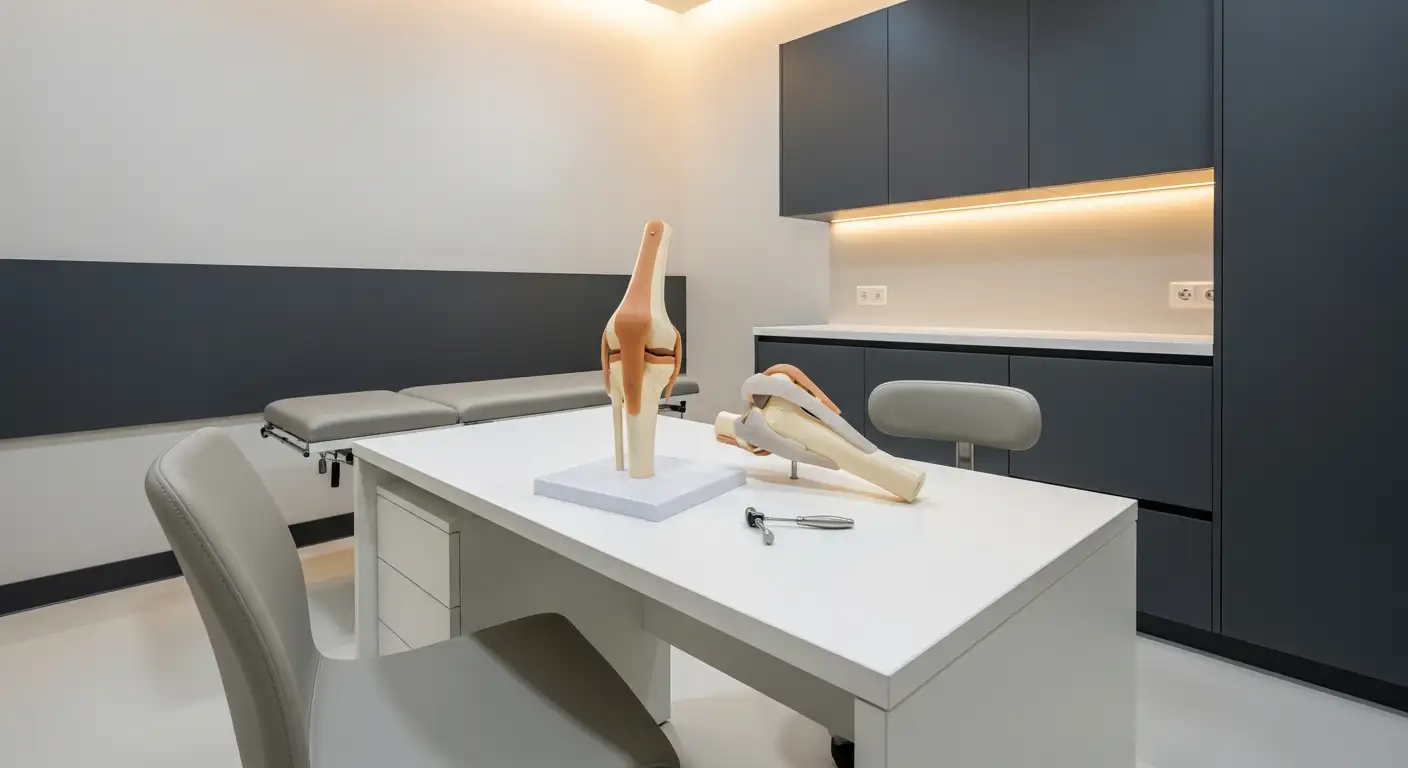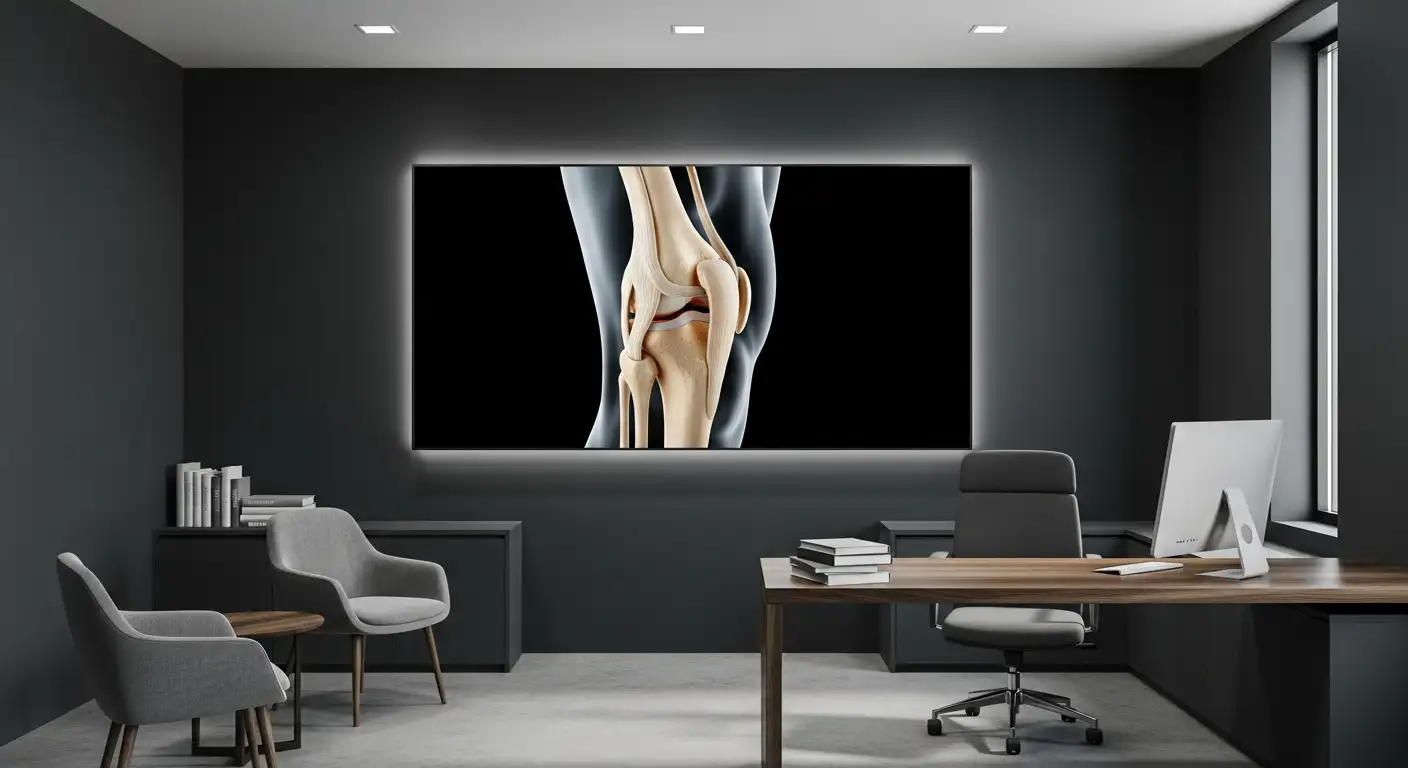Understanding Outside Knee Pain
Outside knee pain when walking can be a result of various underlying conditions. One common cause is iliotibial band syndrome (ITBS), which is prevalent among runners, cyclists, and hikers. ITBS occurs when the iliotibial band rubs against the lateral femoral epicondyle, leading to pain on the outside of the knee.
Overview of Outside Knee Pain
Patients with outside knee pain typically experience discomfort in the lateral aspect of the knee, especially during activities like walking, running, or cycling [1].
Causes of Outside Knee Pain
The primary cause of outside knee pain is iliotibial band syndrome. The iliotibial band, a thick band of connective tissue that runs along the outside of the thigh, can become irritated and inflamed from repetitive flexion and extension of the knee during activities like running or cycling. The repeated friction between the iliotibial band and the lateral femoral epicondyle leads to outside knee pain.

Other potential causes of outside knee pain may include:
- Patellofemoral pain syndrome: This condition occurs when the kneecap does not track properly, causing pain around the kneecap and on the outside of the knee.
- Bursitis: Inflammation of the bursae, small fluid-filled sacs that cushion the knee joint, can lead to pain on the outside of the knee.
- Meniscus tear: A tear in the meniscus, the cartilage in the knee joint, can cause pain on the outside of the knee, especially during twisting or pivoting movements.
It is essential for individuals experiencing outside knee pain to seek medical evaluation to accurately determine the underlying cause of their pain. Proper diagnosis and treatment are crucial for managing outside knee pain and preventing further complications.
Iliotibial Band Syndrome
Iliotibial Band Syndrome (ITBS) is a common cause of outside knee pain when walking, particularly among runners, cyclists, and hikers. It occurs when the iliotibial band, a thick band of connective tissue that runs from the hip to the shin, rubs against the lateral femoral epicondyle, leading to pain on the outside of the knee.
What is Iliotibial Band Syndrome?
Iliotibial Band Syndrome refers to the inflammation and irritation of the iliotibial band, which causes pain on the outside of the knee. This condition is often brought on by repetitive flexion and extension of the knee during activities like running or cycling. The iliotibial band, which usually glides smoothly over the outside of the knee, may become tight or inflamed, resulting in friction against the lateral femoral epicondyle.
Symptoms of Iliotibial Band Syndrome
Patients with Iliotibial Band Syndrome commonly experience discomfort in the lateral aspect of the knee. This pain is typically felt during activities such as walking, running, or cycling [1].
Diagnosis and Treatment of Iliotibial Band Syndrome
To accurately diagnose Iliotibial Band Syndrome and determine the underlying cause of outside knee pain, seeking medical evaluation is essential. A healthcare professional will typically perform a physical examination and may request imaging tests, such as an MRI, to assess the extent of the injury or inflammation.
Treatment for Iliotibial Band Syndrome usually involves a combination of conservative measures. These may include:
- Rest and activity modification to reduce stress on the knee.
- Ice therapy to alleviate pain and reduce inflammation.
- Nonsteroidal anti-inflammatory drugs (NSAIDs) for pain relief.
- Physical therapy to address muscle imbalances, improve flexibility, and strengthen the hip, thigh, and knee muscles.
In some cases where conservative treatments do not provide relief, surgical options like knee arthroscopy may be considered as a treatment for knee pain when walking. However, surgery is typically reserved for severe or persistent cases and is not the first-line treatment option.
Proper diagnosis and treatment are crucial for managing Iliotibial Band Syndrome and alleviating outside knee pain. By following the guidance of healthcare professionals and engaging in appropriate rehabilitation exercises, individuals can recover and resume their regular activities with reduced discomfort.
Exercises for Outside Knee Pain
When it comes to managing outside knee pain, incorporating specific exercises into your routine can be beneficial in alleviating discomfort and improving overall knee function. Here are three types of exercises that can help address outside knee pain: strengthening exercises, stretching and foam rolling, and addressing biomechanical issues.
Strengthening Exercises
Strengthening exercises play a crucial role in reducing outside knee pain by targeting the hip and thigh muscles that support the knee joint and help stabilize the iliotibial (IT) band. By improving the strength and flexibility of these muscles, you can alleviate pressure on the knee and reduce friction on the outside of the knee during movement.
Examples of strengthening exercises that can be beneficial for outside knee pain include:
- Clamshells: Lie on your side with your knees bent. Keeping your feet together, lift your top knee while keeping your feet in contact with each other. Lower your knee back down. Repeat on both sides.
- Hip abductions: Stand with your feet shoulder-width apart. Lift one leg out to the side, keeping it straight, then lower it back down. Repeat on both sides.
- Side leg lifts: Lie on your side with your legs straight. Lift your top leg as high as comfortably possible, then lower it back down. Repeat on both sides.
These exercises, along with a well-rounded strength training program, can help improve muscle imbalances and weaknesses, providing better support to the knee joint and reducing outside knee pain.
Stretching and Foam Rolling
Stretching and foam rolling exercises can also be effective in relieving outside knee pain. By increasing blood flow to the affected area and reducing muscle tightness, these techniques promote healing and improve range of motion in the knee joint.
Some stretching exercises that target the muscles on the outside of the leg, such as the iliotibial band, quadriceps, hamstrings, gluteals, and calf muscles, can be beneficial for managing lateral knee pain [3]. These stretches should be performed gently and without pain.
In addition to stretching, foam rolling can help release tension in the IT band and surrounding muscles. By rolling the foam roller along the outside of the leg, you can reduce muscle tightness and improve flexibility. Foam rolling should be performed with controlled movements and adequate pressure to target the affected areas.
Addressing Biomechanical Issues
In some cases, outside knee pain may be caused by biomechanical issues such as overpronation (excessive inward rolling of the foot) or improper footwear. Addressing these issues can help reduce outside knee pain and correct underlying causes such as IT band syndrome.
Orthotics, supportive shoes, and gait analysis may be recommended to improve alignment and reduce strain on the knee joint. By providing proper support and alignment, these interventions can alleviate outside knee pain and prevent future injuries.
It's important to consult with a healthcare professional or a physical therapist who can recommend personalized exercise programs and provide guidance on proper technique and progression. They can assess your specific needs and develop an exercise plan tailored to your condition, ensuring that you address the underlying causes of outside knee pain effectively.
Incorporating these exercises into your routine can help alleviate outside knee pain, improve mobility, and prevent future discomfort. Remember to listen to your body, start slowly, and gradually increase the intensity and duration of your exercises.
Managing Outside Knee Pain
When it comes to managing outside knee pain, there are several strategies that can help alleviate discomfort and promote healing. It's important to note that these methods may vary depending on the underlying cause of the pain. Here are three common approaches to managing outside knee pain: rest and ice therapy, medications for pain relief, and physiotherapy.
Rest and Ice Therapy
Resting the affected knee and applying ice therapy can be effective in reducing pain and inflammation associated with outside knee pain. This approach is particularly useful in the initial stages of managing the condition. By giving the knee time to rest, it allows the body to naturally heal any minor injuries or inflammation that may be causing the pain. Applying ice to the affected area can help numb the pain and reduce swelling.
Medications for Pain Relief
Painkillers such as paracetamol can be helpful in relieving the discomfort associated with outside knee pain. Anti-inflammatory medications like ibuprofen can also aid in reducing swelling and provide pain relief. However, it's important to follow the instructions on the packet and avoid ibuprofen for 48 hours after an initial injury to avoid slowing down the healing process. Always consult with a healthcare professional or pharmacist before taking any medications, especially if you have any underlying health conditions or are taking other medications.
Physiotherapy for Knee Pain
Physiotherapy can play a crucial role in managing outside knee pain, especially if pain relief methods like medications and ice therapy do not provide adequate relief. A physiotherapist can assess your condition, identify any underlying issues, and develop a personalized treatment plan. Physiotherapy may include a combination of exercises, stretches, manual therapy techniques, and other modalities to improve strength, flexibility, and mobility in the knee joint. The goal is to address the root cause of the pain and provide long-term relief.
It's important to note that exercises and physiotherapy should be performed under the guidance of a healthcare professional. While certain exercises can be beneficial, it's essential to perform them with caution and stop if they cause increased pain. Each individual's condition may vary, so it's crucial to seek professional advice to determine the most appropriate exercises for your specific situation.
By combining rest and ice therapy, medications for pain relief, and physiotherapy, individuals can effectively manage outside knee pain and promote healing. It's important to consult with a healthcare professional to develop a comprehensive treatment plan tailored to your specific needs. With proper management, you can alleviate discomfort and improve your overall knee health.
References
[1]: https://www.healthline.com/health/knee-pain-outside
[2]: https://www.mayoclinic.org/diseases-conditions/knee-pain/diagnosis-treatment/drc-20350855
[3]: https://www.mskdorset.nhs.uk/knee-pain/knee-pain-lateral-knee-pain/





